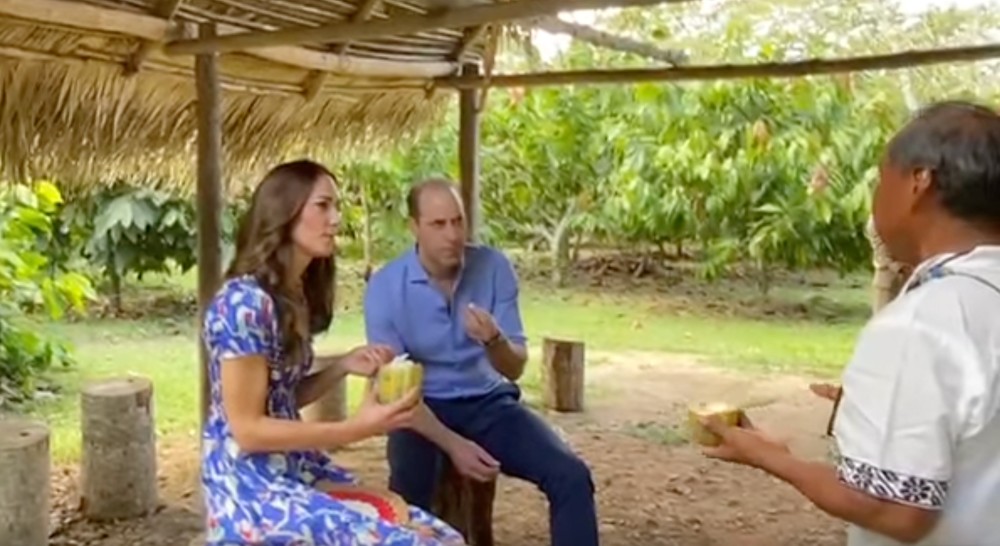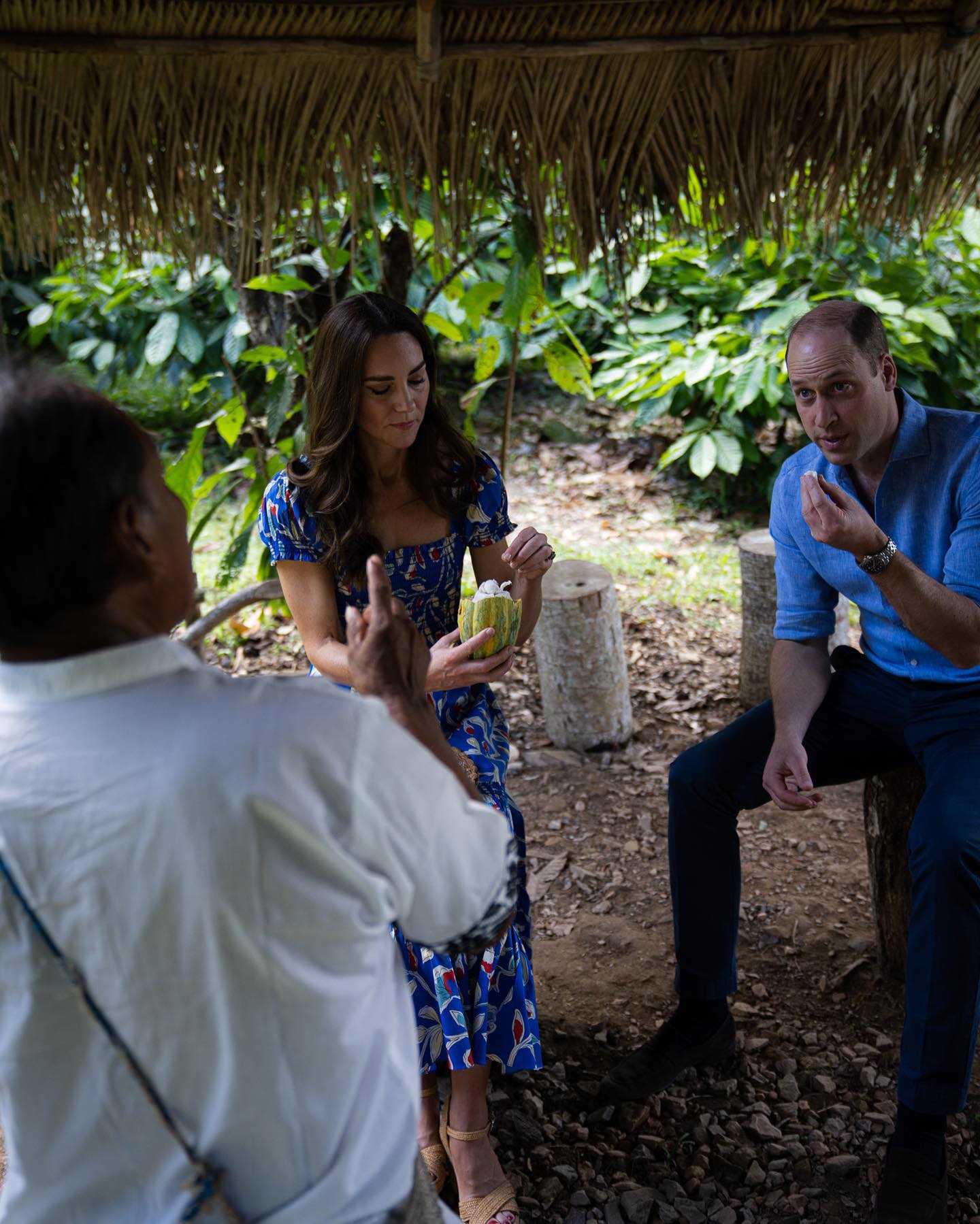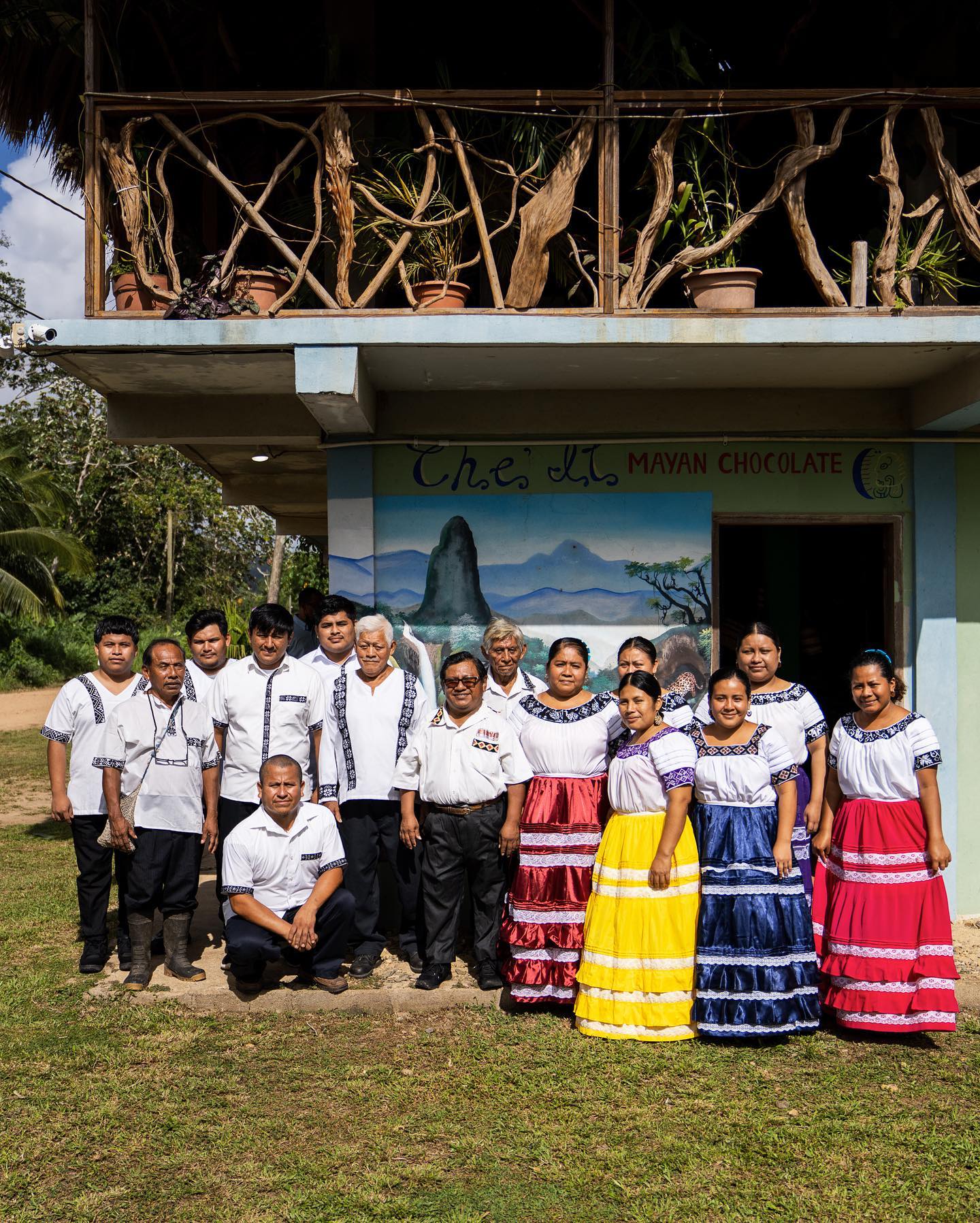
- Details
- By Valerie Vande Panne
Prince William, Duke of Cambridge with his wife Catherine, Duchess of Cambridge, are visiting the Caribbean. Their first stop was Belize, where they met with Mopan Maya chocolatier and cacao farmer Julio Saqui and his Che'il [Wild] Mayan Chocolate business.
Saqui grows and procures cacao from local Maya farmers –– 13,000 pounds of cacao annually. All of the people working with the cacao are from the Maya community. Saqui also works with Chef Brian Yazzie in Minneapolis, as well as other Native groups, including the Native American Food Sovereignty Alliance.
“I want people and friends in the world to know, chocolate brings happiness, and love,” Saqui told Native News Online after the royal visit. “Here in Mayapan Village, we are all about love. We are here to show how we, the Maya people, do traditional chocolate. Every group has their own difficulties, and we hope those are worked out, but in the meantime , we are going to keep producing chocolate to keep everyone happy.”
 The Duke and Duchess taste raw cacao. (Photo/Instagram)
The Duke and Duchess taste raw cacao. (Photo/Instagram)
Saqui says when Prince William walked in, he seemed unsure what to expect, but after he started eating the chocolate, ("It tastes quite fruity," said Prince William) he relaxed and was all smiles. “That’s what chocolate [can] do,” says Saqui.
After the visit, the Duke and Duchess were seen joyfully “flirting,” according to Page Six.
Saqui is grateful for the royal visit, for the opportunity to showcase his family and community’s work to the Duke and Duchess and through them, people around the world.
The Maya community and cacao producers are about “love, kindness, chocolate, and happiness,” he says.
 Julio Zenil and the Che'il Maya Chocolate community. (Photo/Instagram)
Julio Zenil and the Che'il Maya Chocolate community. (Photo/Instagram)
The Duke and Duchess of Cambridge posted pictures of their visit with Saqui to their Instagram page, writing:
This is Julio, a master in chocolate making with his family and he’s just given us a tour of their cocoa plantation farm here in southern Belize. It was an incredible experience to see first hand how this world famous chocolate was made - using all organic products, all grown on their land or nearby. We can see why this is loved all around the world!
Read more Native News Online coverage of Saqui and Maya chocolate and cacao here.
More Stories Like This
Native News Weekly (August 25, 2024): D.C. BriefsUS Presidents in Their Own Words Concerning American Indians
Indigenous Actor Elaine Miles Reports Detention by Alleged ICE Agents
Happy Thanksgiving from Native News Online
Coming Up on Native Bidaské: Behind the Animation: Joey Clift Talks “Pow” and Native Storytelling
Help us tell the stories that could save Native languages and food traditions
At a critical moment for Indian Country, Native News Online is embarking on our most ambitious reporting project yet: "Cultivating Culture," a three-year investigation into two forces shaping Native community survival—food sovereignty and language revitalization.
The devastating impact of COVID-19 accelerated the loss of Native elders and with them, irreplaceable cultural knowledge. Yet across tribal communities, innovative leaders are fighting back, reclaiming traditional food systems and breathing new life into Native languages. These aren't just cultural preservation efforts—they're powerful pathways to community health, healing, and resilience.
Our dedicated reporting team will spend three years documenting these stories through on-the-ground reporting in 18 tribal communities, producing over 200 in-depth stories, 18 podcast episodes, and multimedia content that amplifies Indigenous voices. We'll show policymakers, funders, and allies how cultural restoration directly impacts physical and mental wellness while celebrating successful models of sovereignty and self-determination.
This isn't corporate media parachuting into Indian Country for a quick story. This is sustained, relationship-based journalism by Native reporters who understand these communities. It's "Warrior Journalism"—fearless reporting that serves the 5.5 million readers who depend on us for news that mainstream media often ignores.
We need your help right now. While we've secured partial funding, we're still $450,000 short of our three-year budget. Our immediate goal is $25,000 this month to keep this critical work moving forward—funding reporter salaries, travel to remote communities, photography, and the deep reporting these stories deserve.
Every dollar directly supports Indigenous journalists telling Indigenous stories. Whether it's $5 or $50, your contribution ensures these vital narratives of resilience, innovation, and hope don't disappear into silence.
 The stakes couldn't be higher. Native languages are being lost at an alarming rate. Food insecurity plagues many tribal communities. But solutions are emerging, and these stories need to be told.
The stakes couldn't be higher. Native languages are being lost at an alarming rate. Food insecurity plagues many tribal communities. But solutions are emerging, and these stories need to be told.
Support independent Native journalism. Fund the stories that matter.
Levi Rickert (Potawatomi), Editor & Publisher
